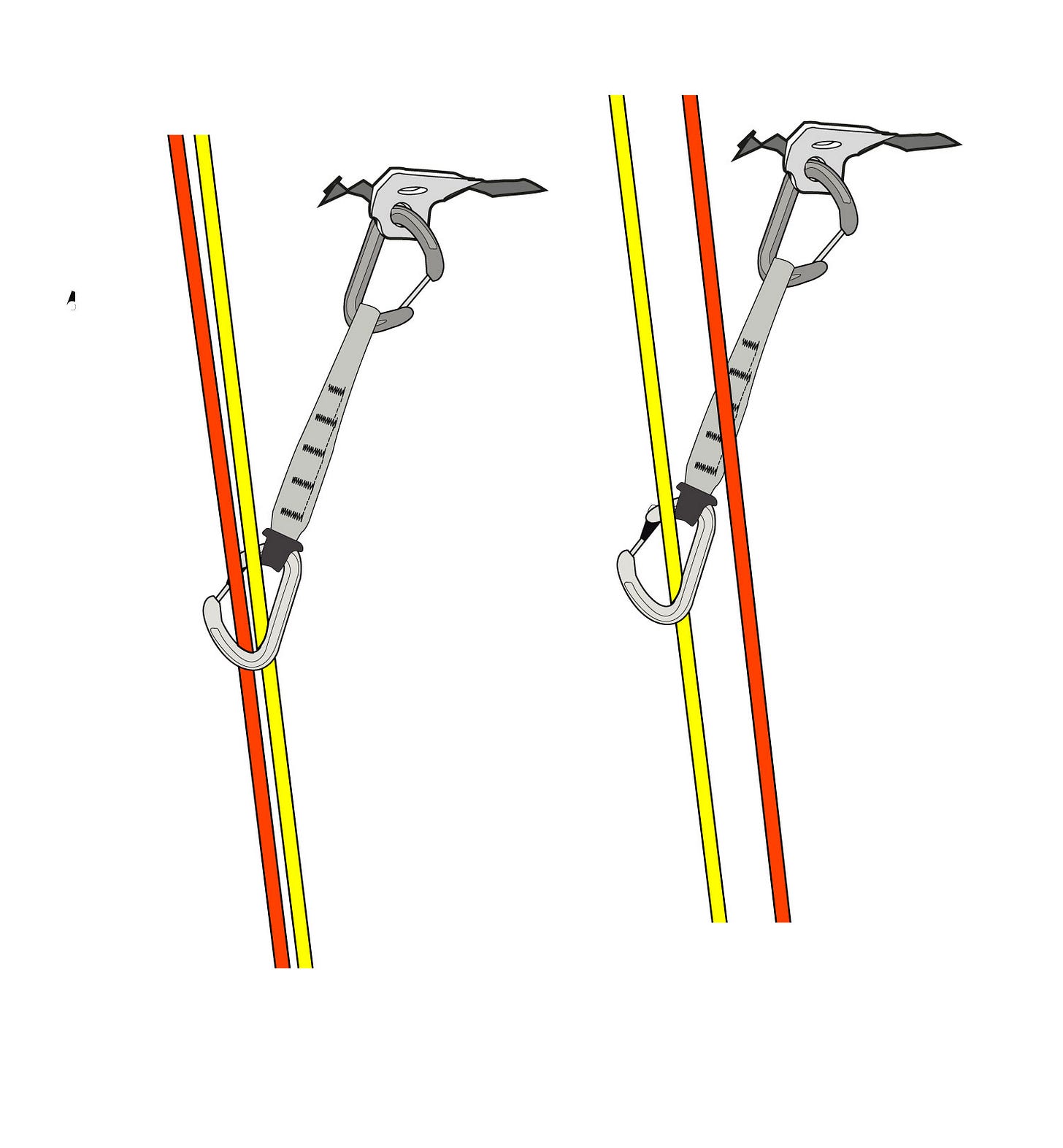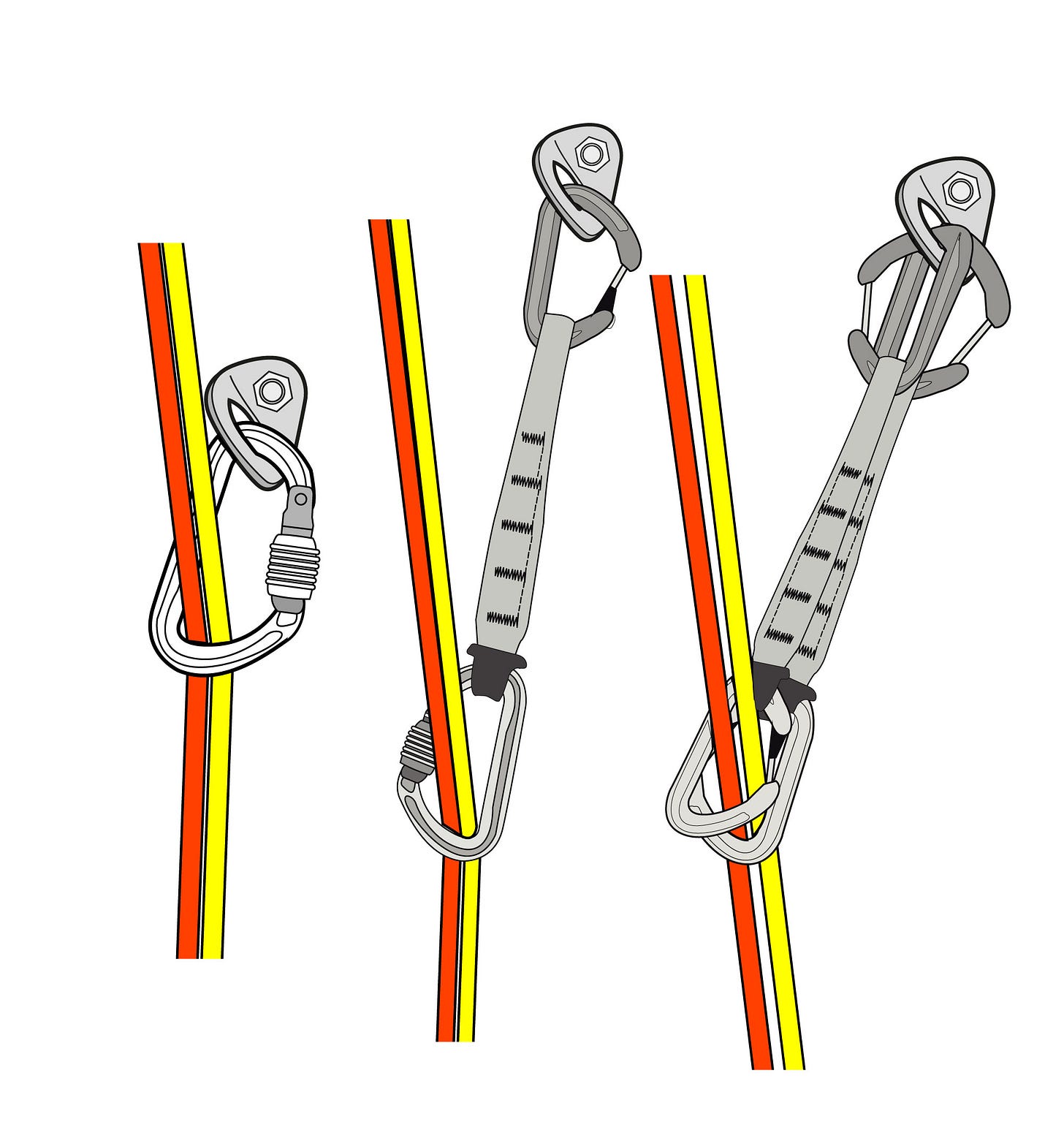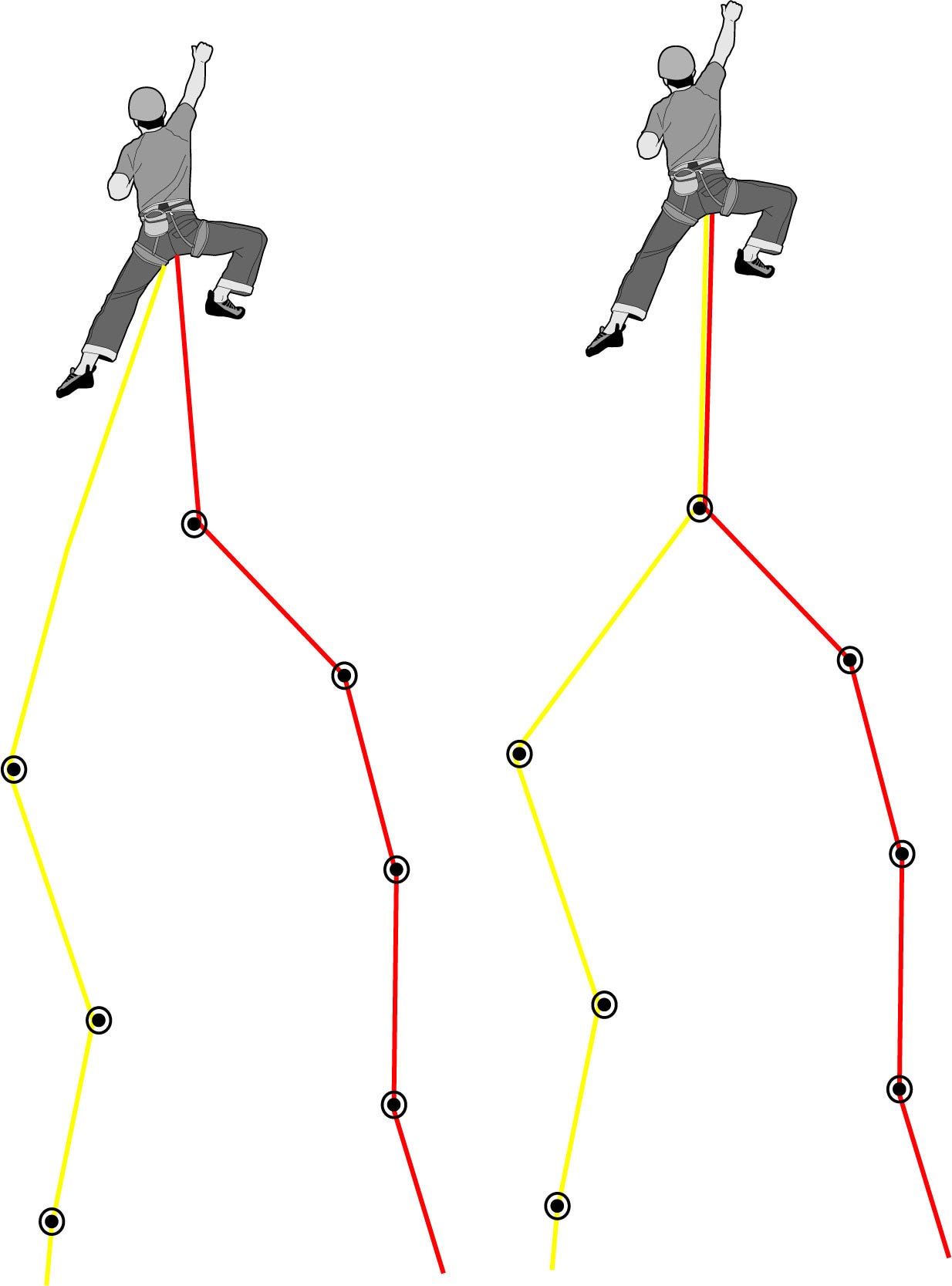Q&A: 7.5 mm rope question
Hey Andy, I'm trying to figure out whether it's okay to bring up two seconds at once each on a single strand of Mammut 7.5mm Twilight (half+twin) rope. On a solid anchor, belaying from a Reverso 4 (rated for 7.5mm) in guide mode.
Seems if a single strand can (mostly) hold a leader fall on its own, it should be fine to bring up a second (with little slack) on a single one..? But I can't find any official information actually stating this...
Some folks on forums say this is okay but then that the ropes should only be clipped in "half rope mode" (i.e. never together in a single draw) by the leader. Other than a little hassle if seconds desire to climb side-by-side, I also don't see why that'd be a problem?
Thanks!
Gabriel
Hi Gabriel
This is a great question, as it leads down several interesting paths, and one worth giving some thought to.
First off, you're right; if a single strand of 7.5 mm rope is safe for the leader to fall on, then it's also fine for a second to fall on, although – if the belayer is doing their job – no follower is going to be falling, only hanging.
If the second was to actually have a significant fall while climbing, it would be a serious error on the part of both the belayer (because they forgot that's what they were supposed to be doing), and the second, who obviously imagined they were doing some run out death pitch, only on a top rope.
Of course, these things do happen, such as when the second is climbing faster than a leader can belay (common when trying to belay two climbers - badly), or when moving together, or simply due to inexperience or overconfidence (some climbers imagine they'll get a prize for beating the belayer).
But, in all cases, it shows a lack of judgement and puts everyone in danger, as in some situations you may not have a belayer - or belay - prepared for a high fall factor fall (if you yank a belayer off their stance without warning, there is a high chance they might let go of the rope).
If the rope is not being taken in, you just need to wait for a second or two. If it's still not going up, then you need to ask what's going on, or give it a few tugs to remind the leader you're still there (not too many, as you might just end up with a load of slack!).
If you do fall while seconding on a single strand of 7.5 mm rope, what's going to happen? Well, seeing as even such a skinny rope will hold a family-sized car (at least a ton and a half), the rope breaking under the load is not something to stress about (even if you weigh 600 lbs). The only danger is if perhaps you've ended up with five metres of slack, then you'll take a ten-metre fall, which, although not nice, will be no big deal for the rope, only dangerous in terms of what you might hit on the way down.
The Dynamic Downside
A more important issue with such thin ropes is rope stretch, which will be high at the start of a pitch, especially a long one. This will be well understood by anyone who's tried top-roping using a half rope.
If the pitch begins with some tough boulder problem above a ledge, the rope is not going to really save you unless the belayer above is really on their game, and has the rope cable tight, which is generally not the case. In such situations, having two ropes can make the difference between a hard landing or a soft one, but either way, it's best to approach such a section like you're bouldering, not on a top rope (visualise how and where you'll jump and land if you fall).
A good leader will foresee this potential hazard and apply a very tight rope to start.
Swooping falls
The real danger for the second would be a swinging fall on a single strand of skinny rope, perhaps at the start of a traverse that has not been well protected by the leader, resulting in the rope running along a sharp ledge or edge above. Such a fall can be dangerous on any rope, but even more so when you've got so little to play with.
Having a second rope can help to reduce both the chance of a swing, by placing runners in such a way as to better protect the second, as well as redundancy (if your rope becomes damaged, you've got a back-up). You can also arrange a back-rope if climbing in a pair (not a three), or have the lead climber (the ablest), re-clip the last climbers' rope as they ascent to give them more of a top rope effect.
Probability hazard
Having only one 7.5 mm rope tied to each follower becomes more important on dangerous ground, where you have loose rocks, sharp flakes, falling stones etc, as neither climber has any rope redundancy (the spare parachute). Climbing such ground on a very thin and stretchy 7.5 mm rope can be very scary and feel more like soloing than seconding.
But, in many alpine situations, the value in climbing as a three, probably outweighs the possible dangers of only having each second attached my one thin line. But, if you're climbing as a three, you're dividing up the rack and stove between three, not two, so maybe it's worth doing what guides do, and put both seconds on certified single ropes (here it would be anything from a 9 mm to 8.5 mm single cert rope). The extra weight, on some big mixed face, maybe translate into an advantage rather than a disadvantage, especially if you're forced to fix or jumar your ropes.
Saying that, you need to apply the correct rope system to the correct grade and type of climb, as many classic alpine routes are ideal for this set-up, while others, such as choss-fests, where everything is loose and fangy, are not. That is not to say you'd not head up a route like Rolling Stones on the Jorasses as a three-person team with two skinny ropes, but only that the leader be aware that although they have two ropes at all time, the followers do not. A 40-metre traverse across loose ground, without any protection, is very dangerous for the leader, but twice as dangerous for the seconds.
Half or Twin
As for clipping the ropes, one of the biggest advantages of a double rope system is that it's a double rope system, and so double clipping every piece (both ropes into each quickdraw), and making it a single rope system would be a terrible waste. If it's marked as a double rope, and not a twin, then use it as a double rope.
When to double clip?
I would only clip both ropes into gear if the gear was very minimal, say into solid gear on a runout pitch, or into ice screws. Sometimes you might have a low runner where rope on a single strand of 8 mm rope might see you hit the deck, so here, clipping both gives you a 16 mm rope.
I've ended up having to sport climb on double ropes a lot while traveling, and in such situtations it's often best to double clip, as this just reduces the wear on one rope and makes it much easier for the belay to hold a fall.
When using a double rope system, it's often well worth using a lock-draw on the final runner (as long as it doesn't add a lot of drag), and double clipping the ropes, so that they travel together up to the belay device as one. This makes it easier when climbing with two climbers (or even one), as you don't have the ropes entering the belay device at differing angles (this is especially important when using a device in belay assist mode).
How to twin clip?
At one time there was some worry about one rope damaging the other, or applying a less than optimal load on the karabiner, with some calling for two draws on each placement, but this is just overthinking the problem, and so just clipping both ropes into a single karabiner is fine.
On some crucial pieces, it's worth using a lock-draw or two draws back to back for the highest level of security.
I hope that helps to answer your question!






“You can also arrange a back-rope if climbing in a pair (not a three)“
Other way round?
Thanks as always for insight into twin vs half
I have always been a “split half ropes onto individual carabiners” person
But the top piece makes sense